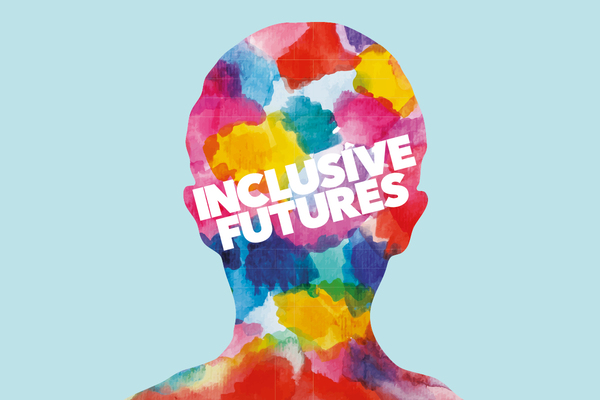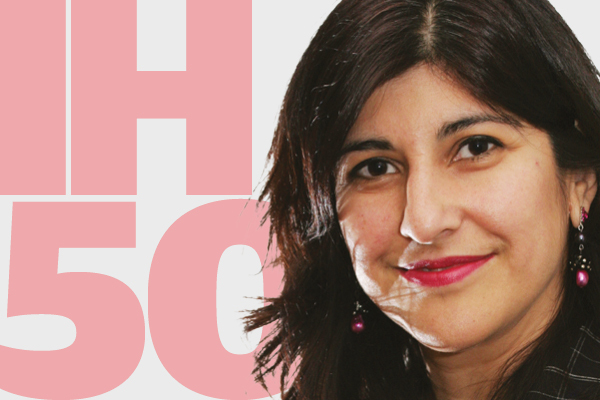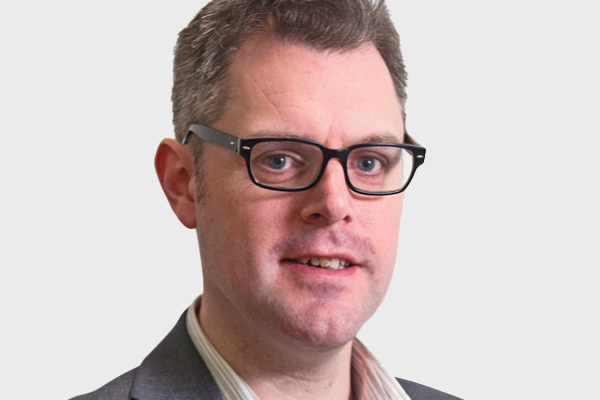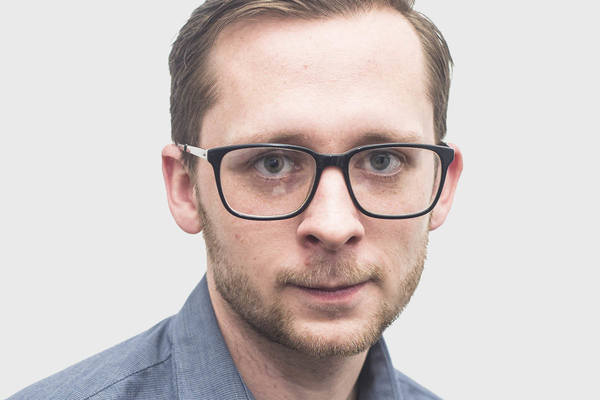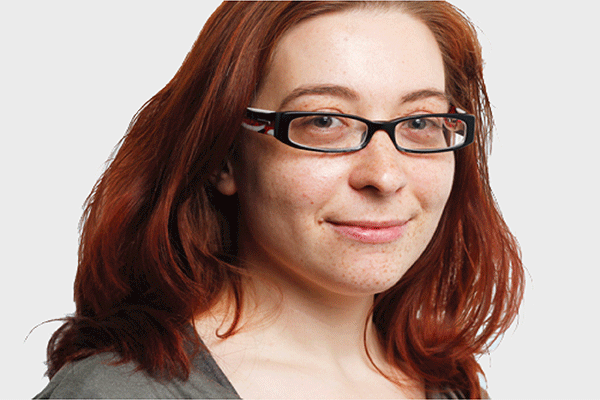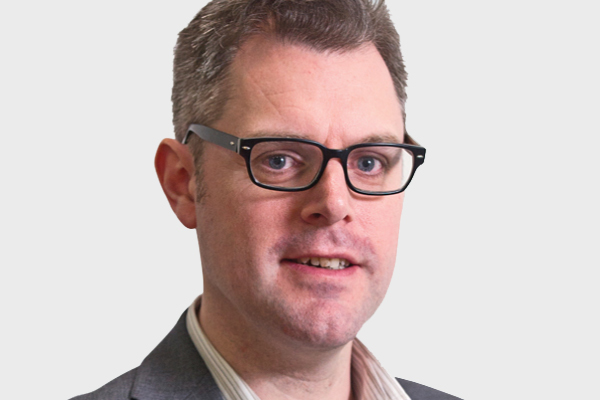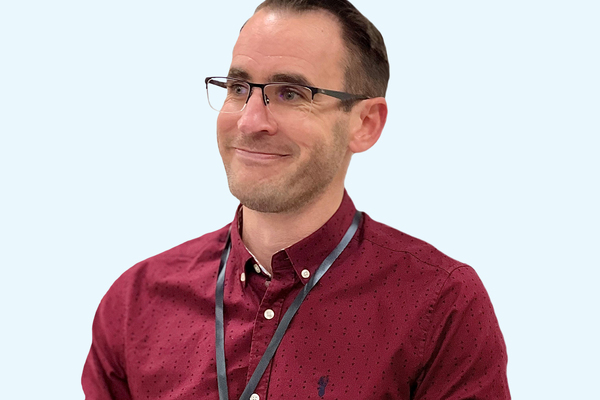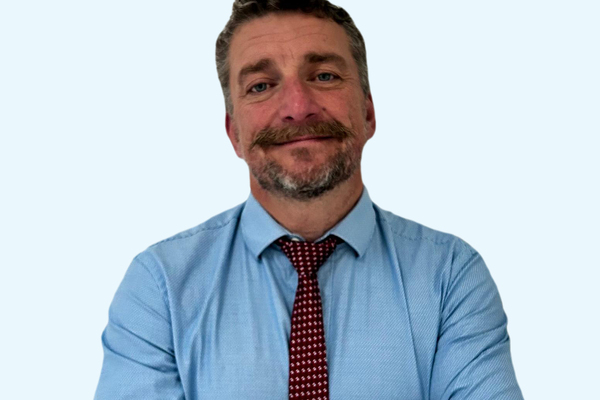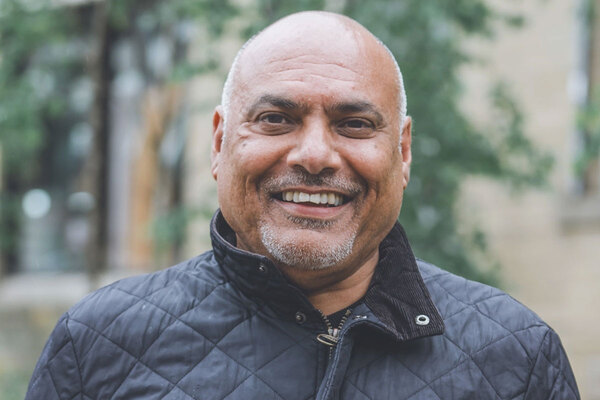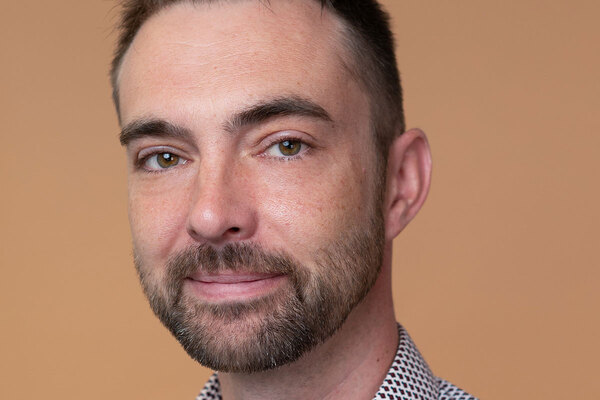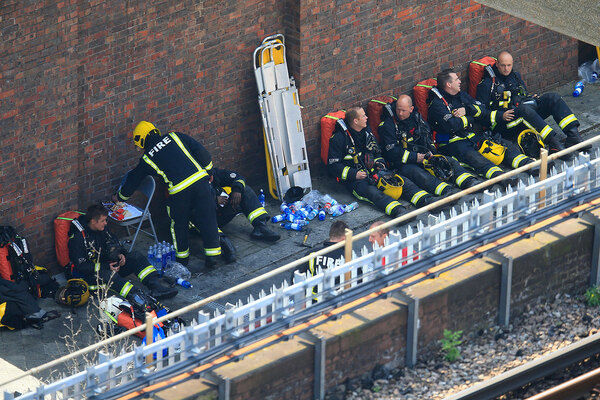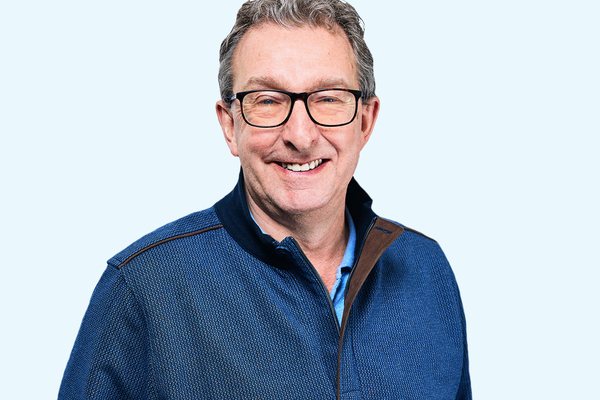You are viewing 1 of your 1 free articles
The Inside Housing Diversity Audit: how diverse has our coverage been?
The media plays a key role in championing diverse role models, so we designed a project to measure Inside Housing’s track record. Jess McCabe shares the results. Illustration by Scott Garrett
Inside Housing’s Inclusive Futures campaign aims to promote diversity and inclusion among housing’s leadership teams
What you are about to read is very unusual for Inside Housing.
This week we are going to pause and talk about a subject that normally doesn’t make it into the pages of the magazine or our website – us. And specifically, how we produce issues of Inside Housing, from the news stories to the illustrations.
To step back a bit, at the start of 2018, we launched a campaign called Inclusive Futures.
The aims of the campaign are simple – to change some of the shocking statistics Inside Housing has uncovered about a lack of diversity in housing’s leadership.
As part of that, through the year we have published investigations into the current state of affairs, as well as a list of black or minority ethnic (BME) current and future leaders.
"If we don’t produce a magazine where you feel represented and seen, then that would be an editorial failure" Jess McCabe, features editor, Inside Housing
We also promised to publish an audit of our own coverage – looking at how Inside Housing is representing the sector.
What follows is the result of that audit – the first we are making public.
The reasons for doing the audit are many: first of all, we have been turning the spotlight on the sector for half the year, and in some ways the glare of the spotlight is harsh – turning up instances of sexual harassment and discrimination, as well as inequality in top jobs.
It only seems fair to consider how we operate, too. But also there is a relationship between this magazine and the sector: of course, we want to be representative of you. But also if we aren’t, then we may be helping to build up the same inequality that led us to discover, for example, that only 4.5% of housing executives are BME people.
So does it matter if our representation of the sector is diverse or not? What is the impact if it isn’t?
Steve Douglas, co-chief executive of consultancy Altair, talks about how “there’s a positive momentum that’s created by having visible role models”.
That is true, but beyond the issue of representing role models. I think there is also a negative side: if you don’t see yourself represented in the media, it is disempowering. And as this magazine is about you – the housing sector – if we don’t produce a magazine where you feel represented and seen, then that would be an editorial failure.
That is just as true in terms of diversity as it would be if we were failing to cover an important policy or topic of discussion within housing.
Statistics on broad demographics of the sector are hard to find.
Research into the housing workforce by the Chartered Institute of Housing from 2013 found that back then around 9.3% of housing workers, but 19.9% of ‘core’ housing jobs, were filled by BME people. It also found that one in five housing workers were disabled.
Editorially, the diversity of our coverage is something that we discuss on a regular basis. We are aware that we are both reflecting back on the realities of the sector – and specifically the leadership of the housing sector. But it’s not just a mirror. We also make decisions – who we profile in our interviews. Who we call for a reaction quote. What is represented in photographs and illustrations that we commission.
In the pages that follow, you will see we examined specifically the proportion of women and men, and BME and white people who appear in the pages of this magazine and our online coverage.
"The diversity of our coverage is something that we discuss on a regular basis"
We also look at representations of disabled people with a visible disability (while acknowledging that many disabilities are not visible).
Obviously, this doesn’t touch on all the many vectors of diversity that it’s possible to measure, but these are things that are more or less possible for us to track. We also will be thinking about how topics such as LGBT representation and how tenants are represented can be addressed in future iterations of the audit.
Some of the results are encouraging – others may point to a need for further thought and work.
ILLUSTRATION AND PHOTOGRAPHY
by Jess McCabe, features editor
When you open your copy of Inside Housing – or most likely click on a story on the website – what do you see? Or, more specifically, who do you see?
Is it a sea of white men? Or is it a diverse representation that roughly matches the demographics of the housing sector or society at large?
To understand the answers, we have calculated what those demographics look like across all issues of Inside Housing so far this year, from January to August. The results are mixed, and to some extent reflect on how Inside Housing is produced.
Diversity is something that pretty much all members of the Inside Housing editorial team will consider at one time or another, alongside other questions such as: what images will best help tell this story to readers? Is there a key person who should be pictured?
The editorial team at Inside Housing makes decisions every day about what images accompany or illustrate stories, in a number of different ways that reflect how journalism is produced in 2018.
For a news story, that first decision might usually be made by the news reporter who writes the story and uploads it to our content management system.
"Diversity is something that pretty much all members of the Inside Housing editorial team will consider at one time or another, alongside other questions"
Their choice of illustration will be reviewed and may be changed by Peter Apps, our news editor. It might be changed again by Carl Brown, our assistant editor – digital and strategy, who looks after the website.
One of the production team may also make a change. “I’m very mindful of how the homepage looks and if, for instance, we have lots of pictures on the homepage of white men, I’ll try and rectify that,” Carl explains.
For big stories, a number of editors are likely to have a discussion with Sonny Dhamu, our art director, on how best to illustrate it. Many voices weigh in on our front page, including Martin Hilditch, our managing editor, and Emma Maier, editor-in-chief.
Of course, any people used in illustrations or photography are led primarily by what the story is about – the housing minister appears many times in the magazine and online, as does Theresa May.
Chief executives of housing associations are often pictured, and therefore the photography used in the magazine is often reflective of the leadership of the sector.
When it comes to illustrating longer analysis and feature stories, again, this is a team process, usually involving myself as features editor, or Peter, as well as the production team and of course Sonny. With illustrations, it is typical for Sonny to stipulate in the brief to the illustrator that any people to be represented should be a diverse mix. The results of this are clear (see pie charts) – as our illustrations include a high level of diversity when it comes to both gender and race.
Photography used in Inside Housing is more of a mixed picture. Out of 1,137 photographs that appeared in the print editions of Inside Housing since January, 576 – or just over half – are of men, 46% are of women and the remaining 3% are not clear.
Meanwhile, 76% of photos are of white people and only 16% are of BME people. Roughly 9% are unclear. Those numbers are not too bad when considering that 13% of the UK population identified as BME in the last census – but whether that reflects accurately on housing’s workforce or tenant population is another question.
What the overall numbers partly hide is that representation has been very mixed through the year. For example, in June we ran 72 photos of BME people, including 48 in our BME Leaders special supplement. But in July, across four issues of Inside Housing, this dropped to only six (see graph).
Perhaps most worryingly, across 1,137 photographs and 161 illustrations, people with visible disabilities appeared only three and two times respectively.
In other words, disabled people were only clearly pictured in 0.4% of all representations of people across eight months. Most of these limited examples were representing tenants.
However, Chartered Institute of Housing figures suggest that one in five housing workers are disabled.
In terms of representation of tenants, the English Housing Survey records that 48.5% of social housing households include at least one person with a disability.
A note: it is not always possible to tell someone’s race or gender identity just by looking at a photo or illustration of them. In calculating these figures, we have made some assumptions based on initial appearance – this is not ideal, but we believe it is worthwhile in order to reflect on the perception that Inside Housing creates for readers in terms of visible representation of women, men, white and BME people, and people with visible disabilities.
NEWS
by Peter Apps, news editor
News journalism is fast paced. At a modern national paper (or more accurately its website), journalists work under the pressure of an instant turnaround. While the world of the trade press is not so extreme, you are still constantly living in the moment – reacting to the latest event or update, preparing the day’s bulletin and that week’s magazine. Despite all intentions to the contrary, this generates a culture with limited time for reflection or insight.
As a result, our diversity audit has been eye-opening for me. The news desk, which I lead at Inside Housing, took the time to fill in the gender and ethnicity of everyone we named as a quoted source over a two-week period in mid-August. The findings do not paint a pretty picture.
During that period we published exactly 80 news stories. This is above average, as a result of the Social Housing Green Paper, and a variety of other important housing announcements, coming during this period. Within the 80 stories, 87 people were quoted and named, not including anonymous spokespeople.
Of these 87, there were 24 women and 63 men. For the 79 whose ethnicity we could establish (we didn’t ask directly and relied instead on our own knowledge and Google), just seven were BME. This includes one person who was quoted twice.
Quotes in news stories
72% were from men
28% were from women
Source: based on 87 articles published in a two-week period in mid-August
So what do these numbers tell us? On the face of it, the fact that just 28% of our quotes come from women and a measly 9% from BME people suggests a need to widen the pool of people we regularly speak to. But the data says as much, or indeed more, about the sector we report on rather than how we go about reporting it.
Take a classic ‘sector reaction’ story as a case in point. On Monday 13 August, the government published its long-awaited Rough Sleeping Strategy. We reported this news for our Morning Bulletin, and followed up later in the morning with a reaction piece. This is not the kind of detailed work where we phone lots of contacts and conduct lengthy interviews to understand the detail – that comes later. Instead, it is a snap response to the comments which we are sent by the various trade bodies and interested parties who tend to react to announcements of this sort.
That story quoted James Brokenshire (housing secretary), David Orr (chief executive of the National Housing Federation), Gavin Smart (deputy chief executive of the Chartered Institute of Housing), John Healey (shadow housing secretary) and Lord Gary Porter (chair of the Local Government Association). A statement from a consortium of rough sleeping charities was given without attribution to an individual.
Quotes in news stories
91% were from white people
9% were from BME people
Source: based on 79 articles published in a two-week period in mid-August (only includes cases where we can identify the ethnicity of the person quoted)
Those of you familiar with the housing sector will know that all of the five people named are white men. In news you are limited in who you quote by several factors. It is often dictated to you by the comments or responses to questions which land in your inbox. These typically come from the most senior politicians and executives who speak on behalf of their organisation. We are not the first to note that white men are over-represented in roles of this kind.
What then of the stories where we reached out to comment proactively? Of the 87 named quotes, my reporters have listed 19 as actively approached by us, as opposed to being given in a press release or as a response to a query made to the organisation. Of these 19, six were female and three were BME – an average of 31% and 15% respectively – so fairly comparable to the figures for provided quotes.
Of course, we do not select who we phone at random. Reporters phone roughly five contacts and quote the two who reply before the deadline. Some may (and often do) choose to speak off the record. The nature of the topic pushes you towards certain contacts.
"If the news content we manufacture presents a world run by men...that feeds the impression that this is how things naturally are."
You need to phone people with certain expertise, and you are limited to people who are happy to have casual chats with reporters. Again then, this tells us a story about the diversity at the top of the sector as much as it tells us about choices over who we quote. So, does all of this matter?
I would venture that it does. News reporting is important. It is the window through which many people see events they do not experience directly. It shapes world views. It is treated as authority.
But it is, like anything, manufactured, both by the reporters and editors who produce it and the contributors, communications managers and spokespeople who deal with us.
If the news content we manufacture presents a world run by men, a world where the expert voices and opinion formers are male and white, that feeds the impression that this is how things naturally are.
Of course, this is difficult to shift. News reacts to the world, it does not make it. Tokenism – deliberately quoting women and BME people just to produce a shift in the numbers – is neither a practical nor desirable solution.
There are questions for us. Are we guilty of unconscious biases that favour certain sources over others? Are our contacts books skewed too much in favour of people at the top of organisations? There are also questions for the sector. Are your organisations represented by male and white spokespeople? Could this change? Must quotes always come from chief executives, or should other voices be given space to be heard?
They are nuanced questions and they don’t have simple answers. But it is important for all those engaged in the fast-paced job of producing news to at least pause and reflect.
FEATURES
by Jess McCabe, features editor
In a regular week, Inside Housing produces at least three longer-form pieces of journalism found in the magazine and in the ‘insight’ section of the website. Many of these stories are weeks or months in the making and, unlike a reactive news story, leave us with much more leisure to consider who is quoted and who is represented.
Features are led by the features desk (made up of Martin Hilditch and I), and produced by that desk, our news reporters and by freelancers. Every week we run a more reactive news analysis feature that is produced by the news team.
Overall, this content includes a wide range of different types of stories, from in-depth investigations, to profile interviews of key people in the housing sector, to examinations of policy and trends.
So as part of this audit, we wanted to examine who we are speaking to within our features.
Our survey of every feature dating back to January reveals that almost 56% of the people we spoke to for our long-form journalism were men and just over 44% were women. At least 13% of the quotes were from BME people.
Where things become more interesting is when we look at the gender of the person writing the article. If the article was written by a man, then 63% of quotes were from men and 37% from women. Articles written by women saw the opposite split, with 58% of quotes coming from women and 42% from men. We want to understand more about this, so it will be an area we scrutinise more closely over the months leading up to our next audit.
Through the year, we run many profiles of individuals – usually these are politicians, leaders of housing organisations or others who are highly influential or important for the sector.
"The discrepancy between the demographics of the frontline candidates and the rest of our coverage has given us a lot to think about"
Since January, we have produced 21 of these profiles. The subjects were 62% men, 38% women. They were also 90% white and 10% BME – in other words, that is only two BME people we have profiled either in print or online since the start of the year.
This is a big contrast to our ‘from the frontline’ section – a weekly Q&A interview with a frontline housing professional, that runs in print and online. Of the 33 people interviewed in this section, 73% were women and 27% were men. Meanwhile, 61% were white and 27% were BME (and for a further 12% it wasn’t possible to tell from the information available).
The candidates for the frontline are suggested by landlords, rather than by editorial staff. They are from a part of the sector rarely quoted in news or a policy analysis. The big discrepancy between the demographics of this group, compared with the rest of our coverage, has given us a lot to think about.
OPINION PIECES
by Martin Hilditch, managing editor
Opinion pieces represent the most direct form of communication between writer and audience.
Between the start of January and the end of August almost 400 comment pieces appeared on Inside Housing’s website – with 102 of these pieces also appearing in print. These pieces cover a vast range of topics including finance, supported housing, development, homelessness and diversity.
Carl looks after all of the reactive comment that appear in the magazine and online, and he was responsible for the ‘IH50’ pieces (comment pieces provided on a regular rota by 50 of the biggest names in the sector), until Maria Shahid, our special projects editor, took over in the summer.
In looking after the comment section, Carl’s job is to think about diversity in lots of different ways – from making sure that we publish opinion pieces from across the UK, that represent our full range of patches, and the diversity of the contributors.
So what do the stats tell us about the diversity of our comment section?
As mentioned, there have been 393 opinion pieces published since January online. Of these, 62% (or 245 pieces) were written by men and 38% were written by women. Seven per cent were written by BME people. Some of the online comment pieces will have been commissioned directly by Carl and others will be the result of pitches to the magazine from individuals or press offices representing particular organisations.
When it comes to print, those figures shift. There are three comment pieces published in print most weeks, comprising of one IH50 article and two reactive comment pieces. All of these pieces have previously been published online and they represent the best of that week’s online comment (although, depending on when they are filed, not every reactive comment piece will be considered for print publication).
In print, there is a precise 50/50 split between comment pieces written by women and those written by men (and if you factor in the leaders written by Emma most weeks, 53% of print comment pieces are written by women). Six per cent of comment pieces in print were written by BME people. Sixty-six per cent of the longer reactive comments in print were written by men, although there was a near 50/50 gender split in print when it comes to IH50 pieces (52% were written by men).
Carl estimates that he spends about one hour a day thinking about comment. That can involve reading through pitches and working out whether they are interesting and will add anything new to individual debates, to commissioning relevant individuals to write comment pieces on particular topics. Some of the comment pieces will be about big running stories and themes, others will be commissioned based on the stories dominating the news agenda that week. Who ends up writing reactive comment can also be affected by the availability of particular individuals when a big story breaks.
Carl says he is mindful of the diversity of comment pieces online – and wants it to be welcoming and accessible to both existing readers and those who might be looking at it for the first time. That means looking very carefully at the diversity of those writing opinion pieces and taking action to commission from a more diverse pool if, for example, all of the pitches that week have been received from white men (as part of our next diversity audit we will be looking much more closely at the pitches we receive).
In part, the more even gender split in print is based on Carl’s ability to select from a pot of contributors who have already filed pieces – making it a more straightforward process to achieve balance.
Nonetheless, clearly there are still challenges around diversity online, particularly when it comes to the representation of BME people. In part, perhaps, this is reflective of the lack of diversity at chief executive level in the housing sector, but clearly there is more that Inside Housing could be doing, too. This is something we will be paying close attention to in the run-up to our next diversity audit.
The Inclusive Futures Summit
Inside Housing is launching the Inclusive Futures Summit
Our high-level summit will bring together respected people leaders and exemplars from the across sector and wider business to debate, discuss and learn how to embed diversity and inclusion in your organisations and harness the myriad benefits that this creates and to ensure that your workplace is reflective of the diverse communities you serve.
Themes being discussed include why being an inclusive organisation can help you be more successful, how to make inclusion visible in your organisation and the best approaches to encourage diversity at board level.
Discussions will also focus on how to future-proof your recruitment processes, promote inclusion through talent management, build working environments safe from prejudice and tackle unconscious bias.
The summit will take place on October 11 at the Emirates Old Trafford, Manchester.
Inclusive Futures
Inside Housing’s Inclusive Futures campaign aims to promote and celebrate diversity and inclusion.
We are pledging to publish diversity audits of our own coverage.
We are also committed to proactively promoting positive role models.
We will do this through the pages of Inside Housing. But we will also seek to support other publications and events organisations to be more inclusive.
Our Inclusive Futures Bureau will provide a database of speakers and commentators from all backgrounds, for use by all media organisations.
We are also challenging readers to take five clear steps to promote diversity, informed by the Chartered Institute of Housing’s diversity commission and the Leadership 2025 project.
THE INCLUSIVE FUTURES CHALLENGE
Inside Housing calls on organisations to sign up to an inclusive future by taking five steps:
Prioritise diversity and inclusion at the top: commitment and persistence from chief executives, directors and chairs in setting goals and monitoring progress.
Collect data on the diversity of your board, leadership and total workforce and publish annually with your annual report. Consider gender, ethnicity, disability, sexuality, age, and representation of tenants on the board.
Set aspirational targets for recruitment to the executive team, board and committees from under-represented groups.
Challenge recruiting staff and agencies to ensure that all shortlists include candidates from under-represented groups.
Make diversity and inclusion a core theme in your talent management strategy to ensure you support people from under-represented groups to progress their careers.
THE CASE FOR CHANGE
34%
of housing association chief executives are female
1%
of housing association executives have a disability
1.6%
of housing association board members are LGBT
Women make up 46% of the UK workforce, but Inside Housing research found that they are under-represented on housing association boards (36%), executive teams (39%) and among chief executives (34%).
Almost a fifth of working-age adults have a disability (18%), yet associations reported only 1% of executives and 4.5% of board members with a disability. Many were unable to provide details.
Nationwide, 14% of the working-age population come from a BME background, climbing to 40% in London and Birmingham. Yet our research found that 6.8% of board members identified as BME, compared with 4.5% of executives.
Statistics on representation of LGBT people in the workforce are in short supply, but official statistics suggest that 2% of the total UK population identify as lesbian, gay or bisexual, rising to 4.1% for 16 to 24-year-olds. Our survey found that 1.6% of board members and 10 executives were LGBT – but most organisations were unable to provide figures.
INSIDE HOUSING’S PLEDGES
We will take proactive steps to promote positive role models from under-represented groups and provide information to support change.
We pledge to:
Publish diversity audits: We will audit the diversity of the commentators we feature. We will formalise this process and publish the results for future audits twice a year.
Promote role models: We will work to highlight leading lights from specific under-represented groups, starting in early 2018 with our new BME Leaders List.
Launch Inclusive Futures Bureau: We will work with the sector to compile a database of speakers, commentators and experts from under-represented groups. The bureau will be available to events organisers, media outlets and publications to support them to better represent the talent in the sector.
Take forward the Women in Housing Awards: Inside Housing has taken on these successful awards and will work to grow and develop them.
Convene Inclusive Futures Summit: Our new high-level event will support organisations to develop and implement strategies to become more diverse and inclusive.

